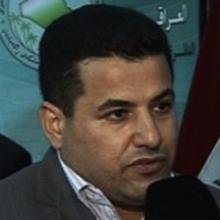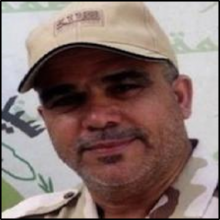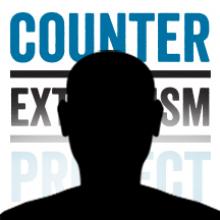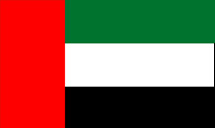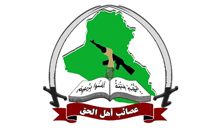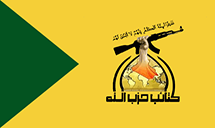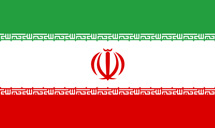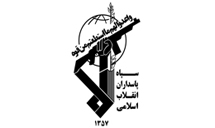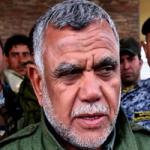Executive Summary:
The Badr Organization is a Shiite political party and paramilitary force that acts as “Iran’s oldest proxy in Iraq,” according to Reuters. Reuters notes that the group’s military wing is considered “perhaps the single most powerful Shi’ite paramilitary group” fighting in Iraq. One Iraqi, in 2015, official described the Badr Organization as “easily” the most powerful force in Iraq, stronger even than Iraqi Prime Minister Haider al-Abadi. Given the group’s deep ties to Iran and its political and military preeminence, analysts have compared the Badr Organization in Iraq to Hezbollah in Lebanon. The militia stands accused of gross human rights violations by Amnesty International and Human Rights Watch.
Formed in 1983 under the name “the Badr Brigades,” the group originally served as the military wing of the Supreme Council for the Islamic Revolution in Iraq (SCIRI), an Iraqi Shiite political party aimed at bringing Iran’s Islamic Revolution to Iraq. During the 1980-1988 Iran-Iraq War, SCIRI’s Badr Brigades fought alongside Iran’s Islamic Revolutionary Guard Corps (IRGC) against the Iraqi military. From 1983 to 2003, the Badr Brigades continued to operate out of Iran, carrying out intermediary attacks in southern Iraq. In 2009, the U.S. government designated then-current leader of Badr Jamal Jaafar Ibrahimi, a.k.a Abu Mahdi al-Muhandis, as a Specially Designated Global Terrorist. Ibrahimi died in a January 3, 2020, U.S. drone strike in Iraq that also killed Qasem Soleimani, commander of Iran’s Quds Force. Badr and other Iranian-sponsored Iraqi militias vowed revenge on the United States.
In 2003, the Badr Brigades returned to Iraq to take advantage of the political vacuum there following the fall of Saddam Hussein’s regime. That year, the group formally rebranded, changing its name to “the Badr Organization of Reconstruction and Development” and publicly pledging to abstain from violent attacks. From 2004 to 2006, however, the Badr Organization launched a brutal sectarian war on Iraq’s Sunni population. During this period, Badr leader Hadi al-Amiri personally stands accused of ordering attacks on up to 2,000 Sunnis. According to a leaked cable from the U.S. State Department, “One of [Amiri’s] preferred methods of killing allegedly involved using a power drill to pierce the skulls of his adversaries.”
In 2007, the Badr Organization’s political wing rebranded, changing its name from the Supreme Council for the Islamic Revolution in Iraq (SCIRI) to the Islamic Supreme Council of Iraq (ISCI) as part of an effort to de-emphasize the party’s ties to the Islamic Republic of Iran. In 2012, the Badr Organization branched off from ISCI, operating as a political party of its own in addition to its capacity as a militia. As ISIS gained control over large swaths of territory in 2013 and 2014, the Badr Organization overtly mobilized, recruited, and fought ISIS alongside other Shiite militias and the Iraqi army.
Today, the Badr Organization is the most powerful militia within the Popular Mobilization Forces (PMF), an alliance of predominantly Shiite militia groups in Iraq that often fights alongside the Iraqi army. Reuters reported that in the March 2015 fight for Tikrit, Badr militiamen and the regular army drove identical tanks with only an army logo differentiating the two forces. Some units in Iraq’s army, including Iraq’s 5th and 20th Battalions, have reportedly answered to Badr leader Hadi al-Amiri. As of early 2017, the Badr Organization claims to command between 10,000 and 50,000 militants. Washington Institute for Near East Policy fellow Michael Knights assessed Badr’s strength to be between 18,000 and 22,000 fighters as of August 2019. As ISIS lost traction in Iraq, Reuters described the Badr Organization’s role in Iraq as “ascendant.”
The Badr Organization constitutes an active political force in Iraq in addition to operating as a militia. From 2011 to 2014, Badr leader Hadi al-Amiri served as Iraq’s transportation minister. From October 2014 to July 2016, another Badr member, Mohammed Ghabban, served as Iraq’s interior minister. As of late 2016, the Badr Organization held 22 seats in Iraq’s parliament. The group has long been criticized for its hold over Iraq’s Interior Ministry. In January 2018, the Badr Organization, Kata’ib Hezbollah (KH), and Asaib Ahl al-Haq (AAH), joined with other PMF units to form the Fatah Alliance political party ahead of Iraq’s May 2018 elections. The alliance won 48 parliamentary seats in the election, of which 21 belong to Badr, and in June it allied with Muqtada al-Sadr’s Sairoon Alliance after Sadr’s party won the Iraq elections. The Badr Organization led the second-largest political bloc in the Iraqi parliament until the October 2021 parliamentary elections, which saw Shiite parties drop to only 14 seats as Sadr’s party claimed victory. On July 13, 2018, Iraqi protesters in the country’s south attacked the political offices of Badr and other Iran-backed groups as they called for Iran to withdraw from Iraq.
Although the Badr Organization’s political arm portrays itself as welcoming and conciliatory to Sunnis, the areas where the group fights ISIS have seen “some of the most high-profile Sunni-Shiite violence of the current conflict,” according to the Washington Post. This is particularly true in Iraq’s Diyala province, where Amiri has been leading military operations. According to one Human Rights Watch employee, “We’ve documented widespread burning and destruction of homes. That’s something we’ve recorded in literally every place where militias are leading the fight against ISIS. In some instances, we have documented them carrying out summary executions of people… the [militias] that we’ve documented the most abuses by are definitely Badr Organization.” During the fight to retake Mosul beginning in late 2016, Human Rights Watch urged that Iraq ban abusive Shiite militias from partaking in the operation. More recently, the group has also recruited former ISIS members in the Diyala province, who are used to stoke anti-Kurdish violence in the areas under its control.
The Badr Organization emerged during Iraq’s civil war. The group is implicated in the torture and murder of thousands of Sunni Muslims. The Badr Organization has directly attacked American forces in Iraq, and U.S. officials have warned that the group would resume its attacks on U.S. interests after the military defeat of ISIS in Iraq. In November 2017, Amiri called on U.S. forces to leave Iraq, warning that his group would not allow a single American to remain.
On July 1, 2019, Iraqi Prime Minister Adil Abdul Mahdi issued a decree ordering the militias of the PMF to choose between full integration into the Iraqi armed forces or disarmament by July 31. The prime minister’s decree stated that the PMF factions have to choose between either political or paramilitary activity and if they choose politics, they are not allowed to carry weapons. The decree was an attempt by Abdul Mahdi at curtailing the autonomy of Iranian-backed militias, which boast more than 120,000 fighters. Some critics suggested the United States and Saudi Arabia instigated the decree after U.S. officials concluded that drone attacks on Saudi Arabia’s oil pipeline in May 2018 were launched from Iraq, not Yemen, which raised concerns over the activities of Iran-backed militias in Iraq.
U.S. officials want the Iraqi government to do more to rein in Iranian-allied militias that have grown in power since they helped win the war against ISIS, including preventing them from using Iraqi territory as a launchpad for attacks against the American military or its allies. According to Mahdi’s decree, all PMF factions must abandon their old names and receive new names in compliance with the regulations of the Iraqi army. The decree forbade political parties and parliamentary blocs from having ties with the PMF. Also, all the headquarters, economic offices, and checkpoints manned by militias are to be shut down. Abdul Mahdi issued a new decree in September 2019 that restructured the PMF’s leadership. In June 2020, the Republican Study Committee in the U.S. House of Representatives recommended designating the Badr Organization and its leader, Hadi al-Amiri, as terrorists. The recommendation also included other PMF factions Kataib al-Imam Ali, Kataib Sayyid al-Shuhada, Liwa Abu al-Fadhal al-Abbas, and Jund al-Islam.
Doctrine:
For years, the Badr Organization served as the military wing of the Supreme Council for the Islamic Revolution in Iraq (SCIRI), a political party committed to bringing Iran’s revolutionary brand of Shiite Islamism to Iraq. However, when SCIRI reemerged in Iraq in March 2003, the group insisted that it was not pushing for an Iranian-style government, despite the group’s name and ongoing ties to Tehran.
Since 2003, Shiism and Iranian-influenced Islamism have remained central elements of the Badr Organization’s identity. In 2011, Badr members celebrated the end of the U.S. military presence in Iraq by plastering the walls of government buildings with posters of Iran’s supreme leader, Ayatollah Ali Khamenei, and his predecessor, Ayatollah Ruhollah Khomeini. The following year, Badr split from SCIRI—now called the Islamic Supreme Council of Iraq (ISCRI)—in order to maintain its ties to Iran. In early 2015, Badr leader Hadi al-Amiri reaffirmed his support for Iran’s supreme leader, saying that Khamenei “has all the qualifications as an Islamic leader. He is the leader not only for Iranians but the Islamic nation. I believe so and I take pride in it.”
With the fight against ISIS in Iraq and the rapid growth of the PMF, Badr experienced a surge of support and influence. Nonetheless, many Iraqis remained suspicious of whether or not Badr would put the interests of Iraq before those of Iran. Amiri sought to turn the popular support for the PMF into a political victory for Badr and moved to draw a distinction between Badr’s political and military wings. In December 2017, Amiri ordered his fighters to withdraw from the cities they occupied, cut ties with Badr’s political wing, and follow the commands of the Iraqi National Army.
Still, Amiri rebuked calls by Prime Minister Haider al-Abadi for the PMF to abandon its heavy weapons and join the Iraqi Army. Amiri pledged in April 2018 to personally “take up arms” to defend Iraq from “any danger” regardless of any political position he may hold. He also applauded Iran’s support for Badr and other PMF units when ISIS first swept into Iraq, stating in 2017, “We commend the support of the Islamic Republic…In the beginning, the international coalition did not support Iraq. It was only the Islamic Republic of Iran that stood with us in the beginning.”
In January 2018, Badr formed the Fatah Alliance, a political bloc of Iran-backed PMF factions including Kata’ib Hezbollah (KH) and Asaib Ahl al-Haq (AAH) and led by Badr’s Amiri. After Fatah received second place in Iraq’s May 2018 parliamentary elections, a Fatah leader named Karim al-Nuri signaled that the party would not seek to change Iraq’s post-2003 policy of working with both Iran and the United States. In June 2020, Fatah Alliance member Fadhil Fatlawi told Iranian media that the Iraqi parliament was committed to expelling U.S. forces from Iraq.
Organizational Structure:
Hadi al-Amiri leads the Badr Organization’s military and political wings, but his influence extends beyond the group’s confines. Amiri was given command over Iraq’s army and police in Diyala province. An August 2019 assessment of Badr Organization’s main areas of operations placed the group throughout the bulk of Diyala province, from the eastern suburbs of Baghdad to Iran and from Zurbatiyah in the south to Tikrit in the north. Then Iraqi Prime Minister Haider al-Abadi had also reportedly entrusted Amiri with control over the Iraqi Army’s 20th Brigade, according to the brigade’s commander, General Ali al-Wazir. Badr also controls PMF Brigades 1, 3, 4, 5, 9, 10, 16, 21, 22, 23, 24, 27, 30, 52, 55, and 110 and has the allegiance of additional PMF brigades and several Iraqi Army brigades operating in Diyala. One Human Rights Watch employee said that Amiri “is an extremely powerful figure and he’s essentially acting with total impunity now. It’s not really the government leading the militias; it’s the other way around.”
In his capacity as leader of the Badr Organization’s militia, Amiri claimed that he presented the group’s military plans to Abadi for approval. However, in April 2015, Abadi ordered that all Popular Mobilization Force (PMF) militias, including the Badr Organization, be placed under his office’s direct command.
Although Amiri appeared to act without much Iraqi government oversight, reports suggested he answered to the leader of Iran’s IRGC-Quds Force, Qasem Soleimani. In the 2015 fight to retake Tikrit from ISIS militants, Soleimani “was directing operations on the eastern flank from a village about 55km (35 miles) from Tikrit,” according to a Reuters report. Another Reuters report noted that “Soleimani also directed Iranian-trained Shi’ite militias—including the Badr Brigade.” RAND Corporation analyst Alireza Nader has written that the Badr Organization “appear[s] to be taking direct orders from Tehran.” This assertion is supported by the historic ties between Iran and Badr, which spent the first two decades of its existence as a direct military arm of the Supreme Council for the Islamic Revolution in Iraq and was led by Iranian officers. Amiri has continued working directly alongside the IRGC since returning to Iraq, including working side-by-side with Soleimani during the battle for Mosul. Amiri was photographed outside the U.S. Embassy in Baghdad on December 31, 2019, as protesters threw stones and torched a security post at the embassy, prompting suspicions that he was encouraging the violence. After the attack, U.S. Secretary of State Mike Pompeo called Amiri an Iranian “proxy” aiding terrorists.
In addition to his capacity as the Badr Organization’s military leader, Amiri also heads the group’s political wing, which maintains an office in east Mosul. Since it split from political party ISCI in 2012, the Badr Organization has emerged as a prominent political party within Iraq. In December 2010, then–Prime Minister Nouri al-Maliki appointed Amiri as Iraq’s transportation minister. In October 2014, Prime Minister Abadi appointed a Badr member, Mohammed Ghabban, as interior minister. At the time of Ghabban’s appointment, the Washington Post’s Loveday Morris wrote that “there is little doubt that Hadi al-Amiri, head of the [Badr Organization] party and its military wing, will wield the real power in the ministry.” Ghabban announced his resignation from the post in July 2016 but was replaced by another Badr member, Qasim al-Araji, in January 2017. Araji, a former member of the Quds Force, was twice arrested by U.S. forces for working with the anti-American insurgency during the U.S. war in Iraq. Prior to joining the Badr parliamentary bloc, Araji had been involved in smuggling and distributing explosives that were intended for use against U.S. forces, according to leaked documents.
In January 2018, Kata’ib Hezbollah (KH), Asaib Ahl al-Haq (AAH), and the Badr Organization joined with other PMF units to form the Fatah Alliance political party in preparation for Iraq’s May 2018 elections. Prior to the elections, Qais al-Khazali, secretary-general of AAH, claimed that “the next prime minister will be someone chosen by the Fateh Alliance or selected in accordance with conditions set by the Fateh Alliance.” In May, the alliance exceeded expectations, winning 47 parliamentary seats in the election. The following month, Iraq’s parliament ordered a manual recount of the 11 million votes amid claims of fraud. Notwithstanding, on June 11, the Fatah Alliance formed a coalition government with Muqtada al-Sadr’s Sairoon Alliance, which received the largest number of parliamentary seats in the elections. The coalition placed Amiri and Fatah in a position to obtain high level government positions and have a final say in who will be Iraq’s next prime minister. However, while Fatah as a whole made large electoral gains, Badr won only 22 parliamentary seats, the same number of seats it won in 2014.
On June 1, 2020, Amiri resigned from parliament and as leader of the Fatah Alliance. He gave no reason for his resignation, but Iraqi sources suspected he was vying for the leadership of the PMF. Amiri was replaced in the parliament by his deputy, Abdulkarim Younis Elan.
Financing:
The Badr Organization is backed by Iran, and Badr leader Hadi al-Amiri has confirmed that his group receives support from Iran. Senior Badr official Muen al-Kadhimi has said that Iran “helped the group with everything from tactics” to “drone and signals capabilities, including electronic surveillance and radio communications.” Badr-controlled areas of Diyala province have also reportedly served as transit points for Iranian arms supplies entering Iraq.
After ISIS was expelled from Iraq, Badr reportedly took control of the Safra border crossing between the Baghdad-controlled parts of Iraq and the Kurdistan Regional Government. Local sources claim that the Badr Organization receives between $12 and $15 million each month in customs tariffs and taxes on the goods traded through Safra.
Recruitment and Training:
Since April 2014, the Badr Organization has established numerous city-based “popular committees” to recruit fighters for its military wing. After Iraq’s most influential Shiite cleric, Ayatollah Ali al-Sistani, issued a fatwa in July 2014 calling on Iraqis to fight ISIS, one Badr Organization recruiter claimed to have received 7,000 applications. The militia reportedly operates training facilities in Hillah, central Iraq.
Also Known As:
- Badr Brigade
- Badr Brigades
- Badr Corps
- Badr Organization of Reconstruction and Development
- Badr Organisation in Iraq
- Martyr Mohamed Baqir al-Sadr Forces
- Martyr Muhammed Baqir al-Sadr Forces
- Munathamat Badr
- Quwet Shahid Baqir Sadr (BOQSBS)


